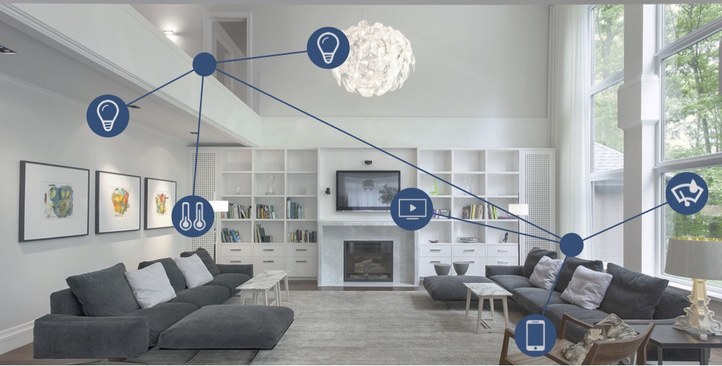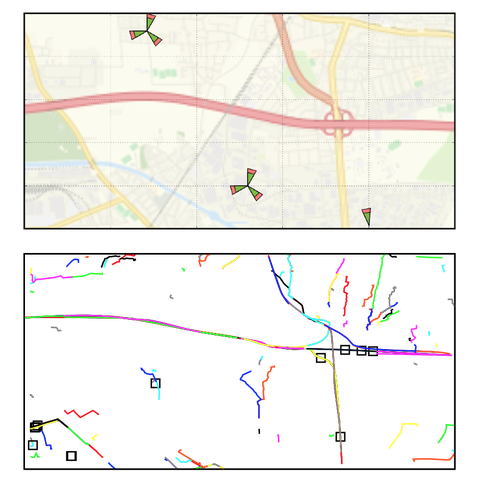High Throughput Network Protocols
The widely known Cisco Virtual Networking Index 2015-2020 predicts that by 2020 wireless and mobile devices will account for 66% of all Internet traffic. Most of this traffic will originate from high throughput services, such as virtual reality and ultra-high definition video streaming. In total, by 2020 over 80% of all consumer Internet traffic is expected to be video. Moreover, the number of connected devices is expected to exceed the world’s population by at least 3 times within five years. These three trends result in several important challenges for the wireless networks of the future:
- Ultra-high throughput: Current 4K and Ultra-High Definition streaming services already require up to around 25Mbps per stream. This is only expected to further increase exponentially, especially with the advent of new types of content and services, such as virtual reality and 3D video.
- Seamless mobility: Users with mobile devices want to enjoy uninterrupted service while moving around, both in their homes, but also while traveling using their car or public transportation. This requires advanced horizontal (among access points) and vertical (among technologies) handover mechanisms.
- Scalability: As more and more users crowd together within a single network cell, interference and collisions increase due to the inherent behaviour of traditional CSMA-based scheduling protocols. It is highly challenging to maintain the same total throughput in these so-called DenseNets.
To support future high-throughput services, a range of different wireless network technologies are being developed for mobile communications (e.g., LTE-Advanced, 5G) and local area networks (e.g., 5GHz 802.11ac/ax, 60GHz 802.11ad/ay). Moreover, on the longer term terahertz and optical wireless technologies, using visual (e.g., Li-Fi) and infrared light, are also being investigated, promising interference-free communication at tens of gigabits per second.
These new technologies bring several new features, such as multi-user and massive MIMO, as well as beam steering and forming. Although these technologies and their features promise immense improvements in terms of scalability and throughput, state of the art data link, network and transport layer protocols are not adapted to bring out their full potential.
IDLab performs cutting edge research to address this issue, and brings future network protocols in line with the hardware and physical layer features offered by state of the art network technologies. Research on the following topics is performed:
- Based on user behaviour prediction and network virtualization concepts, horizontal handovers among Wi-Fi access points or mobile base stations are streamlined and optimized, to provide uninterrupted service to highly mobile users.
- As different wireless technologies have highly different range and interference characteristics, intelligent vertical handovers can help load balance traffic among the networks, based on user location, network congestion and background interference.
- MAC scheduling protocols purely based on CSMA scale poorly in highly dense network environments. Although, TDMA scales better, it is less efficient in many situations. Station grouping MAC scheduling strategies combine CSMA and TDMA principles, greatly increasing scalability, while maintaining near-optimal efficiency.
- MAC scheduling protocols for cutting edge networking technologies, such as 802.11ax and 802.11ay, are based on the traditional 802.11 MAC. As such they are not optimized for and adapted to the specific nature of novel techniques such as massive MIMO and beam steering/forming. More tightly integrated protocols are needed that take full advantage of these features.
- Recently, 3GPP announced the operation of LTE in the unlicensed spectrum in order to offload the limited and expensive licensed spectrum (also known as LAA Licensed-Assisted Access). Adequate design and implementation of coexistence mechanisms are needed in order to achieve a harmonized coexistence between LTE and Wi-Fi in the unlicensed spectrum.
- With the proliferation of more and more high throughput technologies on the one hand and an even further diversification of application requirements (latency, throughput, etc.) on the other hand, providing differentiated guarantees becomes of utmost importance. Therefore, we are investigating multi-technology network slicing concepts that can split the wireless spectrum into multiple isolated virtual networks, each providing their own set of delivery guarantees.
- Current sub 6 GHz mobile (3G/4G) and Wi-Fi (802.11 a/b/g/n) technologies are very popular, but unable to supply the high data rates and the low latency needed for emerging data-hungry applications and services. The 60 GHz spectrum is increasingly attractive to achieve very high data-rate, but there is a need for open, real-time Software Defined Radio (SDR) platforms, that integrate PHY, MAC and higher layer network functionality.
Staff
Chris Blondia, Jeroen Famaey, Steven Latré, Jeroen Hoebeke, Ingrid Moerman
Researchers
Patrick Bosch, Enri Dalipi, Tom De Schepper, Jetmir Haxhibeqiri, Pedro Isolani, Xianjun Jiao, Vasilis Maglogiannis, Dries Naudts, Daan Pareit, Bart Sas, Adnan Shahid, Kathleen Spaey, Bart Spinnewyn, Jeremy Van den Eynde, Jono Vanhie-Van Gerwen, Ensar Zelikovic
Projects
- FP7 FLEX: FIRE LTE testbeds for open experimentation
- H2020 WiSHFUL: Wireless Software and Hardware platforms for Flexible and Unified radio and network controL
- H2020 eWINE: elastic Wireless Networking Experimentation
- H2020 Flex5GWare: Flexible and efficient hardware/software platforms for 5G network elements and devices
- H2020 ORCA: Orchestration and Reconfiguration Control Architecture
- ICON SELVIE
- ICON SHIFT-TV
- ICON iFEST - improved festival experience through wireless technology
- ICON FORWARD - Factories operating on Robust Wireless Automation: Research and Design
Key publications
- Maria Torres Vega, Jeroen Famaey, A. M. J. Koonen, Antonio Liotta. Resource allocation in optical beam-steered indoor networks. IEEE/IFIP Network Operations and Management Symposium (NOMS), Istanbul, Turkey, 2016, UA ID: c:irua:134285
- Glenn Daneels, Jeroen Famaey, Steven Bohez, Pieter Simoens, Steven Latré. Upstream content scheduling in Wi-Fi DenseNets during large-scale events. In proceedings of the IEEE Globecom (Workshops), San Diego, USA, 2015, UA ID: c:irua:135043
- Enri Dalipi, Vincent Sercu, Pieter Becue, Bart Jooris, Ingrid Moerman, Jeroen Hoebeke, “Troubleshooting Wireless Home Networks Using a Portable Testbed”, The 30th IEEE International Conference on Advanced Information Networking and Applications, March 23-25, 2016, Le Régent Congress Centre, Crans-Montana, Switzerland
- Maglogiannis, V., Naudts, D., Willemen, P., Moerman, I. (2016, December). Impact of LTE Operating in Unlicensed Spectrum on Wi-Fi Using Real Equipment. In 2016 IEEE Global Communications Conference (GLOBECOM) (pp. 1-6).
- Pieter Willemen, Daniela Laselva, Yu Wang, Istvan Kovács, Relja Djapic and Ingrid Moerman. (2016, September). SON for LTE-WLAN access network selection: design and performance, EURASIP Journal on Wireless Communications and Networking 2016:230
- Pareit, D., Lannoo, B., Moerman, I., & Demeester, P. (2012). The history of WiMAX: a complete survey of the evolution in certification and standardization for IEEE 802.16 and WiMAX. IEEE COMMUNICATIONS SURVEYS AND TUTORIALS, 14(4), 1183–1211.
- J. Haxhibeqiri, M. Mehari, W. Liu, E. De Poorter, W. Joseph, I. Moerman, J. Hoebeke, “Wireless Handover Performance in Industrial Environments: a Case Study”, 21st IEEE conference on Emerging Technologies and Factory Automation, Sept. 6-9, 2016, Berlin, Germany
- Elnaz Alizadeh Jarchlo, Jetmir Haxhibeqiri, Ingrid Moerman, Jeroen Hoebeke, "To Mesh or not to Mesh: Flexible Wireless Indoor Communication Among Mobile Robots in Industrial Environments", The 15th International Conference on Ad Hoc Networks and Wireless (ADHOC-NOW 2016), Lille, France, July 4-6, pp. 325-338, doi: 10.1007/978-3-319-40509-4_23

